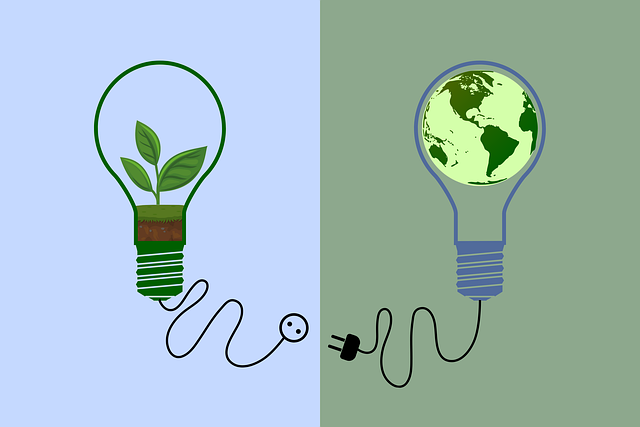Signs Your Chiller Needs an Upgrade This Summer 2025
With the arrival of summer, many companies’ chillers are gradually unable to cope with high temperatures. If your equipment has been running for many years and has problems with reduced energy efficiency, frequent failures, or difficulty adapting to new processes, it may be time to consider an upgrade. This article will show you what signals mean that your chiller should be upgraded.
Decreased cooling efficiency
Does your chiller have inaccurate temperature control and difficulty reaching the set temperature in summer? Is the temperature control fluctuating greatly and high temperature alarms often appear? Or is the cooling system running time extended but the cooling effect is reduced?
If there are any of the above problems, it means that the performance of your chiller is declining. Heat exchanger scaling, pipe blockage, increased condensing pressure, compressor wear, refrigerant aging, or control system response lag will cause the equipment’s cooling efficiency to decrease. These problems not only affect production efficiency, but also product quality.
However, a decrease in cooling efficiency does not mean that the chiller is damaged, but that the cooling system is in a sub-healthy state. If this situation is left untreated, it will eventually lead to system collapse. Once the cooling efficiency is found to be reduced, it should be repaired or maintained immediately. If your equipment has been running for more than 8 years or is unable to meet the current load requirements, upgrading the equipment is a more economical and reliable option.
Frequent failures
If your chiller has frequently alarmed, repeatedly tripped, and experienced multiple repairs in the past year, it means that its reliability is declining. Typical manifestations include frequent compressor starts and stops, multiple triggering of high-pressure alarms, abnormal touch screen displays, etc.
Once these problems occur, it is difficult to completely solve them through simple cleaning and debugging. Because this is often the result of the superposition of problems such as aging of multiple components, poor heat dissipation, and sluggish control systems.Frequent failures will lead to production interruptions, affect order delivery, and also bring unplanned equipment maintenance costs.
In particular, old chillers may find it difficult to buy core spare parts due to discontinuation of production, slowing down the progress of repairs. If you have to perform unplanned shutdowns for the chiller system more than once a quarter, or the system always shuts down during peak loads in summer, it means that it is outdated. Instead of repeated repairs, it is better to consider upgrading to a more stable cooling system.

Unable to adapt to new demands
With the adjustment of product structure and the expansion of production capacity, the working conditions of chillers are also changing. If you find that the chiller that was originally operating normally begins to have problems such as insufficient load, slow cooling speed, and insufficient temperature control accuracy after the new product is launched and the new equipment is put into production, then it is likely that it is no longer competent for the current task.
If your previous production used normal temperature process, and the newly added production line is a low-temperature process, the operating temperature of the chiller may not cover the low-temperature range. In addition, the new process may have higher requirements for temperature control accuracy, and the old cooling system lacks the corresponding algorithm.
In some workshops with a high degree of automation, chillers with remote monitoring, abnormal alarm, and Modbus/TCP communication protocol are the best choice. However, many old equipment cannot be connected to the digital platform of modern factories due to outdated communication protocols.
From the perspective of environmental protection regulations, some chillers use high GWP refrigerants such as R22, which do not comply with the latest environmental protection regulations, and there is a possibility of elimination and environmental review risks. At this time, it is more cost-effective to introduce the latest cooling system.
Rising energy consumption
Have you carefully looked at your summer electricity bill? Under the same working conditions, has the electricity bill changed compared with the same period in previous years? If this year’s electricity bill is higher than last year, or the monthly electricity bill is rising, it means that you are paying extra for inefficient cooling equipment. Long-term high-energy operation of the chiller not only increases operating costs, but also increases the output value energy consumption of the enterprise, affecting the company’s carbon emission indicators or ESG assessment.
In a high-temperature environment, poor heat dissipation of the condenser will cause the cooling system to run at high pressure and the compressor to run at full load for a long time; or the evaporator is scaled, the heat exchange efficiency is reduced, and the chiller has to start the compressor more frequently to reach the set temperature, which will increase energy consumption.
Aging of components can also lead to increased energy consumption. For example, after a compressor has been running for a long time, the internal parts are worn, the sealing performance deteriorates, the compression ratio is reduced, and the cooling capacity generated per unit time is reduced, but the motor still consumes the same or even more power. Some old chillers use fixed frequency operation, and they still maintain the output power at full load when the load is low, resulting in energy waste. They have a low COP and cannot achieve the cooling capacity of modern chillers with the same amount of electricity.

Increased safety hazards
A chiller that has been in service for more than five years and has been running at high load for a long time may have become a potential source of hidden dangers if it lacks regular maintenance, system updates or safety device upgrades. The electrical components of old chillers are prone to insulation aging, poor contact or damage due to long-term heat, moisture and wear. Especially in the high temperature environment in summer, the temperature in the electric control box is too high, which is more likely to induce short circuits, tripping, and even equipment fires.
After long-term use, the pipes, joints, valves, welding points and other parts inside the refrigeration system are prone to leakage due to metal fatigue or aging of gaskets. If refrigerants such as R22 and R410A are used, it may cause dizziness, nausea, hypoxia and even suffocation to operators. Many old models lack safety protection functions, and cannot alarm or shut down in time when operating abnormally, which will bring safety hazards to equipment and personnel. This means that you need a modern industrial chiller with a safety protection system.
Don’t wait until the old chiller is scrapped before upgrading
Many companies choose to continue using the chiller when the above problems occur, and replace it until the system is completely paralyzed, but this will bring some costs. Summer is the peak season for cooling demand. Chiller manufacturers often have tight production schedules. The delivery time of some non-customized models may be as long as several months.
After delivery, they need to be installed and debugged to connect the process flow. This takes a lot of time. This means that during this period, your production line may be forced to stop working. Purchasing a new chiller while the old equipment is still running can achieve seamless connection between the new and old equipment and avoid affecting production progress.
LNEYA standard chillers are in stock, and customized chillers will minimize delivery time according to your needs. The best time to upgrade the chiller is now!
Related chillers
CONTACT US
TEL:
EMAIL:
WeChat & WhatsApp:

Wechat QR

Have a question or need a quote? Fill out the form below, and our team will get back to you within 24 hours.
 LNEYA Industrial Chillers Manufacturer Supplier
LNEYA Industrial Chillers Manufacturer Supplier












